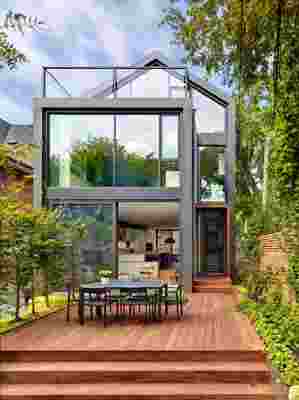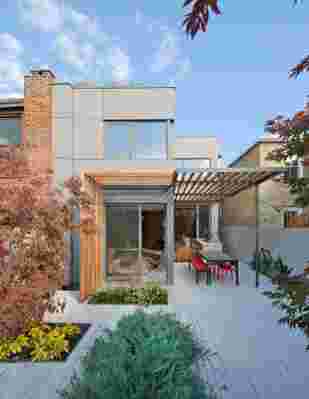September 13,2022
You Don't Have to Turn Your House Into a Spaceship to Go Green
by Jennifer Cameron inGarden Style
With rows of solar panels winking at us from their roofs, we can name which of our neighbors are making sustainability a priority from blocks away. Don't get us wrong—we applaud taking a big step to go green. But it's also understandable if you're not ready to commit to such an aesthetic game changer. Heather Dubbeldam, principal architect at Dubbeldam Architecture + Design in Toronto, takes advantage of less intrusive features—ones that work hard and look good—to ensure her projects are eco-friendly. Here, she shares some of her favorite ideas with us.
Big windows are a natural light source, so you'll be able to leave artificial lights off longer. (Hello, energy bill savings!) Even better: Plan a skylight you can open in your main stairwell. "Warm air rises and is vented out the skylight, and to replace that air, cooler air enters open windows on the lower floors. This is also a way to achieve natural ventilation for warmer months," says Dubbeldam.
"We design large windows for many of our projects that are shaded by trees in the summer, allowing for generous natural light to fill the interior spaces, while the trees block the sun and reduce heat gain," explains Dubbeldam. "Exterior elements such as a brise-soleil (a slatted overhang) can also provide shading in the summer when the sun is high in the sky. In the winter, the leaves are gone and the sun is lower, warming the interior through passive solar gain."

The backyard of Skygarden House by Dubbeldam Architecture + Design.
Dubbeldam and her team are big proponents of high-efficiency in-floor radiant heating and high-velocity cooling systems, despite their higher cost. "These strategies present no change in aesthetics, making it easier for clients to choose these sustainable options," she says. "Since they use lower energy, the savings are realized over time in reduced annual energy costs."
Not all construction materials and finishes are created equal. According to Dubbeldam, energy-efficient options aren't just good for the environment, they're also durable, long-lasting, and better for your home's air quality. Think FSC-certified wood lumber and flooring products, low VOC paint, wood millwork with no added formaldehyde, recycled-content drywall, hard surface flooring, low-flow plumbing fixtures, high-efficiency lighting, and high-performance insulation.

The back deck of Through House by Dubbeldam Architecture + Design.
Absorb as much rainwater runoff as possible on your property with less paving around your home, permeable wood decking, and a garden with local vegetation, Dubbeldam suggests. " Green roofs also offer insulation, while mitigating the urban heat island effect."
